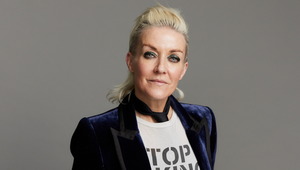
How to Play the Game: Streamers and Creators

Let’s commit the first cardinal sin of esports and some make direct comparisons between the worlds of competitive gaming and competitive sport.
It’s an easy misstep to make.
Since Kettering Tyres paid a thousand pounds (or thereabouts) to have their name emblazoned on the shirts of Kettering Town FC - widely credited as the first sponsorship deal in football we’ve amassed 45 years of knowledge, understanding and best practice when it comes to these sorts of partnerships.
We’ve had much less time to familiarise ourselves with esports. The absurd growth rates seen in gaming and esports (averaging around 35% YoY for the last 5 years per Goldman Sachs) has brought brands to the industry en masse.
What differentiates those who have done it well (hello DHL) from the many who haven’t (I’m thinking of a particularly wooden piece of content churned out by an anonymous telco recently) is the appreciation and respect paid to the gaming and esports community and therefore the ability to communicate authentically.
Yep, as with basically everything in marketing, it comes down to our understanding of the audience.
Talk with them in their language, demonstrate that you get them, and your message will likely land.
Talk at them, in your language, about yourself, and you’ll rightly be ignored.
Whilst most marketers would consider themselves pretty au fait with the nuances of football culture, there remains a stark knowledge gap when it comes to the nuances of gaming culture.
Nielsen tells us that 36% of big business decision makers are interested in football, and about 15% are interested in esports. At first reading that’s a surprisingly high number but look a little deeper and it suggests this is driven by a commercial curiosity rather than a genuine interest (the fact that this number drops to 7% for small business owners would seem to support this).
Which brings us now to that lazy comparison.
Uniquely in the world of gaming, so much media value is locked up in the channels of those who aren’t the highest performers, but the most accessible and entertaining personalities.
In football we see a direct relationship between on-field performance and social appeal. Ronaldo (281m), Messi (201m) and Neymar (150m) are the most-followed sportspeople on Instagram because they are also the most talented footballers on the planet.
Of the top 50 most-followed Twitch accounts, only one - Kyle ‘Bugha’ Giersdorf - is also in the top 50 esports earners, and those earnings come largely from one big competition win (the 2019 Fortnite World Cup, per esports Earnings).
In fact, of the Top 10 most-followed Twitch accounts, the majority aren’t even professional gamers, they are professional content creators.
That’s why to truly understand gaming and esports is to understand it as an ecosystem of entertainment channels, each with its own community, culture and language.
In 2020 - supercharged by COVID and the downtime it afforded - some 27.9 billion hours of live video game streams were watched. By contrast, some 60 billion hours of Netflix content were consumed in the same period (according to Streaming Observer).
Again, that’s a lazy comparison because the consumption experience is so different.
Netflix is a passive experience. You sit on the couch, binge whatever series you’re hooked on, maybe eat a tub of ice cream along the way.
Streaming content on Twitch, and to a lesser extent YouTube Gaming, involves live interaction with the creator, a two-exchange with them in real time. Other conversations will be playing out for hours within the stream chat.
It’s genuinely a place to connect and interact with your friends, your community and the personalities who represent it.
On SVOD and BVOD services meanwhile, the closest we get to any sort of interaction might be Netflix asking if we’re still awake at the end of a particularly long binge session.
That unrivalled access to talent, the two-way dialogue you can have in real time, and the connection to a community of like-minded fans is precisely the thing that sets gaming and esports apart. It’s also the reason why fans are following the most entertaining streamers, not the highest performing players.
There’s a base level gaming ability required, sure.
Then there’s the charisma you bring to your gameplay and the conversations you engage in with your fans.
Arguably more important still though is the amount of time available to you to create content. Given the average daily session times on Twitch hover around the 4-hour mark (according to Twitch 2018 reporting), it’s effectively a full-time job for streamers to maintain the relationship with their fans and followers.
So, what’s the opportunity for brands?
These streamers should be an integral part of your gaming strategy.
They’re the ones that will vouch for you in their community. Their endorsement is critical to the acceptance of your brand.
Finding the right personality to partner with is not just about seeking out the creator with the highest reach and deepest engagement.
Brands will be pleasantly surprised by the affordability of high-profile streamers, but first priority should be given to the product-fit and brand-fit.
If the association feels forced, the community will sniff out the lack of authenticity.
It should be immediately obvious that there are shared values, personality and tone of voice.
It should feel like a natural fit.
That might mean taking some time to get to know different communities within the gaming ecosystem. They’re remarkably welcoming, don’t be afraid to ask questions or even invite them into focus groups.
Understand that being into gaming and esports doesn’t always mean having a controller in your hand.
Understand that for many, it’s a vehicle through which to catch up with friends, to share jokes, stories and anecdotes.
It’s about bantering with creators and entertainers and them actually replying to you.
It’s about feeling a sense of community and belonging.
So, if you’re going to seek inclusion in that community and are also looking for that sense of belonging, best you choose a community that reflects your own values, interests and personality.
If you want to be on the inside, you need to contribute to the conversation, so you better know your subject matter.
If you’re going to participate in that two-way dialogue, you better understand the nuances of the language.
And most importantly, as with any relationship, be authentic, and be willing to be there for the long haul.

Luke Haynes is Strategy Director of M&C Saatchi Sport & Entertainment Sydney. Keep an eye out for the monthly column from the team as they take us through practicalities and nuances of navigating esports in 2021 and beyond. Read the previous column, which looks at authenticity and esports here.














